International Plastic Bag Free Day: Most of us use plastic bags or any items made with plastic every day. Specifically plastic bags are used by almost everyone and that to just for a few minutes or hours. After our use we throw them. But we never thinks what happens to those plastic bags?
International Plastic Bag Free Day
International Plastic Bag Free Day is observed on July 3 every year to motivate people to avoid using single-use plastic to eliminate plastic pollution. International Plastic Bag Free Day is an annual event to spread awareness that a plastic bag-free world is possible and that sound environmental alternatives to single-use plastic bags are available. Bangladesh was the first country in the world to ban plastic bags entirely in 2022. Soon after, many more countries, including India, also banned single-use plastic.
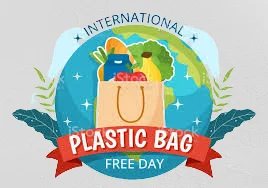
Bag Free World organization established the International Plastic Bag Free Day. This organization introduced several campaigns promoting a plastic-free world that inspired other parts of the world to participate in Plastic Bag Free Day. Rezero, a member of Zero Waste Europe (ZWE), initiated the first International Plastic Bag Free Day which was observed on July 3, 2008. In 2015, the European Union also passed certain directives to reduce the usage of single-use plastic bags.
Plastic causes environmental pollution. Plastic bags are a major contributor to plastic pollution, environmental pollution and pose various environmental and health hazards. Plastic contributes to land pollution and blocks drainage systems. If it ends up in water bodies, it causes harm to marine life.
Single-use plastic bags have motivated some cities to ban them altogether. Places that have banned disposable plastic shopping bags include:
- Leaf Rapids, Manitoba
- San Francisco, California
- Los Angeles, California
- Portland, Oregon
- Seattle, Washington
- Mexico City, Mexico
Other places have either put a ban or implemented regulations on the use of any kind of plastic bag. Places taking these measures include Hawaii, North Carolina, Italy, China, many countries in Africa, and some states in Australia and India. Overall, about 127 countries regulate plastic bags in some way. These regulations include phasing out plastic bags and providing incentives for reusable bags plastic items , too.
Plastic bags are lightweight, meaning they travel long distances through the wind and water. Here, they can get caught in trees and fences, clog waterways, and eventually make their way into oceans.
Plastic Pollution
Plastic pollution is a global problem and sadly Plastic pollution is a man-made one. Approximately 500 billion plastic bags are used on a global scale. These bags or any single use plastic items end up littered all over the planet which has a negative effect on the environment, wildlife and indeed human health. The marine ecosystem in particular is suffering immensely as a result of plastic pollution. Plastic particles in the ocean attract toxins, which in turn affects us, as the toxins enter the food chain.
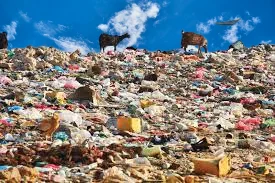
Be it food packets, toys, storage packing, furniture or electronic items, plastics are so widely used that imagining our lives without them is impossible. It is one of the best substitutes for wood, thus reducing the cutting of trees and helping the environment. On the other hand, sometimes it poses problems too, for example: when it comes to their disposal. Upon usage, artefacts made from plastic sustain wear and tear and become brittle, so it is necessary to dispose of.
Plastic pollution is the accumulation of plastic objects and particles (e.g. plastic bottles, bags and microbeads) in the Earth’s environment that adversely affects humans, wildlife and their habitat. Plastics are inexpensive and durable, making them very adaptable for different uses; as a result, manufacturers choose to use plastic over other materials.
But the chemical structure of most plastics renders them resistant to many natural processes of degradation and as a result they are slow to degrade.
There are different types of plastic, each with its unique set of properties. Some types of plastic are more durable than others, while some are more flexible. But no matter what type of plastic it is, it will always have a negative effect on the environment.
Plastic is made from petroleum, a non-renewable resource. This means that once we use up all the petroleum in the world, there will be no more plastic. And since plastic takes hundreds of years to break down, all the plastic that has ever been made is still in the environment.
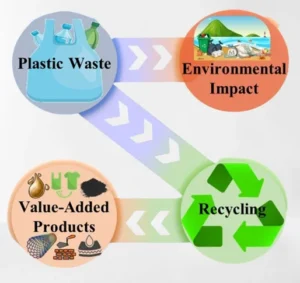
One of the most common types of plastic is polyethylene terephthalate (PET). It’s used to make water bottles, food containers, and packaging for many other products. PET is durable and doesn’t break down easily, so it can stay in the environment for a long time.
Another type of plastic is polyvinyl chloride (PVC). PVC is used to make pipes, flooring, and packaging for some food products. It’s also found in some clothes and toys. PVC contains harmful chemicals that can leach into the environment and cause health problems in people and animals.
Both PET and PVC are made of petroleum, so they’re not renewable resources. And since they don’t break down easily, they can stay in the environment for a long time and cause problems.
Other types of plastic are made from renewable resources, like corn or sugarcane. These plastics are called bioplastics. They’re made from plant materials that can be replenished, so they’re more environmentally friendly than petroleum-based plastics.
Improper disposal of plastics poses a number of problems, such as.
- The littering of plastics in open spaces creates unhygienic conditions, as it acts as a breeding ground for insects and mosquitoes that cause diseases like malaria and dengue.
- Plastics do not undergo degradation, thus, stay in the soil for many years, which affects soil fertility and degrades the soil quality.
- When plastic artefacts enter the drainage and sewerage system, they block the pipes and the drains causing waterlogging.
- The improperly disposed of food bags, when eaten by animals, cause stomach and intestine related diseases which even lead to suffocation and death.
- Plastic items find their way to the river and other water bodies, which are then swallowed by fish, seabirds, and other marine species, thus leading to suffocation and death.
- The waste from the plastic manufacturing industry is thrown directly into the water bodies, thus affecting the chemical property of water, causing hazards on a very large scale.
Important Facts About Plastic
1 – 31 species of marine mammals are known to have ingested marine plastic whilst over 100 species of sea birds have ingested plastic artefacts.
2 – Over 250 species have become entangled in plastic, whilst entanglement rates of approximately eight percent have been discovered in some sea lion and seal species.
3 – Plastic bags remain in the world for anywhere from 100-500 years before finally decaying completely, and have a profound impact upon our environment as a result.
4 – Each year, 8 million metric tons of plastic end up in the ocean harming fish and wildlife.
5 – Globally we make 5 trillion plastic bags each year.
6 – The average person uses a plastic bag for 25 minutes.
7 – Every minute around the world, we use 1 million plastic bags.
8 – Plastic bags kill around 100,000 marine animals each year.
9 – It is estimated that 1.1 to 8.8 million tonnes of plastic waste enters the ocean from coastal communities each year causing plastic pollution in the oceans.
10 – Some researchers suggest that by 2050 there could be more plastic than fish in the oceans by weight.
11 – Deforestation is a major concern related to plastic. Plastic is made from petroleum, which means its production contributes to deforestation. The more plastic we use, the more trees are cut down to make way for oil drilling and refining facilities.
12 – Plastic production emits greenhouse gases, which contribute to climate change. Climate change is a major threat to both humans and wildlife, and it’s only getting worse as we continue to pump more and more greenhouse gases into the atmosphere.
13 – For urban solid waste, plastic bags have become major items in the litter system. This has resulted in many detrimental environmental effects including animal choking, pollution, blockage of channels, rivers and streams, and landscape disfigurement.
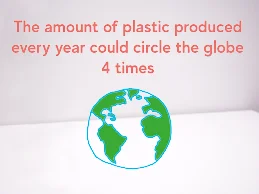
14 – South Africa, has restricted the manufacture and usage of plastic bags by enacting parliamentary legislation.
15 – 1 in 3. fish caught for human consumption now contains plastic.
16 – 2.5 tonnes. of carbon dioxide is generated by producing 1 tonne of plastic.
17 – According to the UN Environment Programme (UNEP), 300 million tonnes of plastic is produced every year, and not all of it is recycled.
18 – Only 9% of all plastic produced is recycled.
19 – Every minute of every day a truckload of plastic is dumped into the ocean.
20 – 73% of beach litter worldwide is plastic ( filters from cigarette butts, bottles, bottle caps, food wrappers, grocery bags, and polystyrene containers ).
21 – One million plastic bottles are bought every minute
22 – Up to 95% of plastic polluting oceans is carried by 10 rivers
23 – 99% of seabirds will be eating plastic by 2050
24 – The average person eats 70,000 microplastics each year
25 – Over the past 50 years, world plastic production has doubled
26 – More than 5 trillion pieces of plastic are already floating in our oceans.
27 – The largest market for plastics today is packaging materials. That rubbish now accounts for nearly half of all plastic waste generated globally—most of it never gets recycled or incinerated.
28 – Several plastic materials are swept into the Pacific Ocean. For example, in the Los Angeles area in the US, around 10 metric tons of plastic fragments such as soda bottles, straws, and grocery bags are thrown into the Pacific Ocean.
29 – Currently, we can only recover around 5% of the plastic bags that we produce. Most of the plastic bags once used are thrown away as waste instead of being collected and recycled for later use.
30 – An American throws away around 185 pounds of plastic each year.
31 – Humans generate a lot of waste, and plastic accounts for approximately 10% of the total waste.
32 – The Americans throw away around 35 billion plastic water bottles annually. Bottled water is ready-made, portable and easily accessible; hence most Americans opt for it.
33 – Around one million sea birds and 100,000 marine mammals are killed each year due to plastic ingestion.
34 – Over a million bags of plastics are used annually across the globe. In a year, around 500 billion plastic bags are used globally.
35 – Currently, Americans generate 10.5 million tons of plastic waste annually. However, they recycle only 1% to 2% of this amount.
36 – Globally, the fishing industry dumps around 150,000 tons of plastic into the ocean annually. This does not include plastic nets, buoys, lines, and packaging, among others.
37 – US law, which implements an international agreement known as MARPOL Annex V, took effect on 31st December 1988. This law prohibits disposing of plastic into the marine environment and requires that ports provide reception facilities for ship-generated plastic waste.
38 – Some countries have already banned or even restricted the use of plastic bags.Examples include China, Australia, Ireland, and Bangladesh, among other nations. However, Bangladesh and India have only banned those that are over 5 microns.
39 – Along the South African coast, there are 3,500 plastic particles for every square kilometre.
40 – 72 billion gallons of water is required annually to make plastic bottles.
41 – Around 24 million gallons of oil is required to produce one billion plastic bottles.
42 – A plastic cup takes around 50-80 years to decompose. A plastic cup has non-renewable materials, which are its basic components. This material does not degrade, which is why plastic cups continue to exist up to now.
43 – Most or all of the recycled plastic can be used to make things such as park benches, trash cans, decks, playground equipment, and kayaks, among others.
44 – Recycled plastic bottles can also be used to make special fleece-like fabrics which are used in blankets and clothes.
45 – A plastic-like jug takes 1 million years to decompose.
46 – Around 1,200 plastic soft drink and salad dressing containers are able to cover an average living room.
47 – Every time while washing our synthetic clothing in a washing machine, microplastics leach into the environment through our household water waste. A single load of laundry could release up to thousands of microfibres into the water supply.
48 – The World Health Organisation (WHO) published shocking research in 2018, exposing the presence of microplastics in 90% of bottled water, which had been tested and revealed only 17 were free of plastics out of 259.
49 – A report published in March 2018 shows that 5 billion people around the world live without waste collection or controlled waste disposal, and roughly 9 million people die each year as a result.
50 – Some of the chemicals that are added to plastic to increase its performance are considered endocrine disruptors that affect normal hormone function and may interfere with brain development in children.
Plastic Bags Alternatives
Paper bags are 100% biodegradable meaning they can be used for composting. Plus, paper is both reusable and recyclable (although the number of times these bags can be recycled is limited). Paper bags, therefore, remove the environmental issue of plastic waste and pollution.
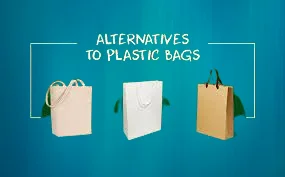
Cotton bags are both biodegradable and reusable, and are made from natural and renewable sources. In theory, cotton bags safeguard the environment by preventing plastic pollution from contaminating the environment.
Jute is an edible leafy vegetable, also known as golden fiber. It’s a long and shiny fiber made from cellulose and lignin material obtained from the jute plant. Once processed, the Jute fiber is used to make rope, bags, carpets, and much more. Jute is renowned for its eco friendly credentials. This is because the material is completely biodegradable. Plus the plant soaks up greenhouse gas emissions (GHGs) during its growth, making these species effective carbon sinks.
Jute bags are affordable and easily available, plus the material is both strong and durable.
Polypropylene (PP) is a cheap and durable plastic material and has a variety of uses. PP is used for reusable bags replacing polyethylene used for the traditional single-use plastic bag.
PP bags need to be used 45 times to have the same environmental impact as single-use plastic bags. This makes these bags a better choice than reusable cotton bags but also highlights the fact these bags must be used over the long term for the environmental benefits to be realized.
International Plastic Bag Free Day gives us an opportunity to remind ourselves, and others, that every action we take, and every bag we dispose of, effects the lives of everyone in the world for generations to come and plastic pollution play a vital role in global pollution.